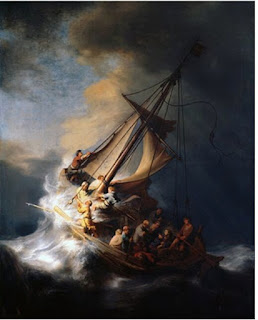Massachusetts Museum Lays Claim to Dr. Kevorkian's Art
An Armenian museum sued the lawyer for Dr. Jack Kevorkian's estate, claiming he donated his artworks to the museum, not to a niece who claims them. The disputed works include 17 paintings, "writings, some musical compositions, a sweater and a hat."
The Armenian Library and Museum of America, of Watertown, Mass., sued attorney Mayer Morganroth in Middlesex County Court.
Kevorkian, who died in June, became famous for his work in assisted suicide. He was prosecuted unsuccessfully four times, and his medical license was suspended, before he was convicted of second-degree homicide in 1999, in a case in which he dismissed his attorneys and represented himself. He served 8 years of a 10-to-25-year sentence and was paroled in 2007, on the condition he stop assisting in suicides.
Kevorkian also was a jazz musician and painter.
The Armenian Museum claims that in 1999 it approached Kevorkian's curator, the Ariana Gallery in Royal Oak, Mich., to discuss mounting an exhibit of Kevorkian's art.
They agreed on the transfer of 17 Kevorkian paintings and other artwork, including "writings, some musical compositions, a sweater and a hat," according to the complaint.
The museum says the exhibit received considerable attention.
Because Kevorkian was in prison by the time the exhibition appeared, he asked that his sister, Flora Holzheimer, attend the opening on his behalf. During the reception, "Ms. Holzheimer announced that Dr. Kevorkian had instructed her to inform plaintiff that the art work was a gift to plaintiff from Dr. Kevorkian," the museum says in its complaint.
The announcement was made before a substantial audience, and was reported by a local newspaper.
In 2008, after Kevorkian was released from prison, the showed his work again, this time with assistance from the doctor, who explained the meanings of his paintings.
"During the intermission, Dr. Kevorkian stated that he was very pleased that he had donated his entire collection to the plaintiff," the museum says. Again, the donation was reported by a local newspaper.
"In reliance upon this gift, plaintiff maintained and continued to maintain the art work as part of its permanent collection during the twelve years that have since elapsed," the museum says.
But after Kevorkian died on June 3 this year, attorney Morganroth informed the museum that in a will written 17 days before his death, Kevorkian, who never married, had left his entire estate to his niece, Ava Janus.
Morganroth told the museum that the paintings in its possession are scheduled to be auctioned on Oct. 27.
The museum refused to relinquish the paintings, and in an Oct. 4 email, Morganroth accused it of "theft of the estate's property," according to the complaint.
The museum seeks declaratory judgment that it owns the art. The museum is represented by Harold Potter with Holland & Knight, in Boston.
The Armenian Library and Museum of America, of Watertown, Mass., sued attorney Mayer Morganroth in Middlesex County Court.
Kevorkian, who died in June, became famous for his work in assisted suicide. He was prosecuted unsuccessfully four times, and his medical license was suspended, before he was convicted of second-degree homicide in 1999, in a case in which he dismissed his attorneys and represented himself. He served 8 years of a 10-to-25-year sentence and was paroled in 2007, on the condition he stop assisting in suicides.
Kevorkian also was a jazz musician and painter.
The Armenian Museum claims that in 1999 it approached Kevorkian's curator, the Ariana Gallery in Royal Oak, Mich., to discuss mounting an exhibit of Kevorkian's art.
They agreed on the transfer of 17 Kevorkian paintings and other artwork, including "writings, some musical compositions, a sweater and a hat," according to the complaint.
The museum says the exhibit received considerable attention.
Because Kevorkian was in prison by the time the exhibition appeared, he asked that his sister, Flora Holzheimer, attend the opening on his behalf. During the reception, "Ms. Holzheimer announced that Dr. Kevorkian had instructed her to inform plaintiff that the art work was a gift to plaintiff from Dr. Kevorkian," the museum says in its complaint.
The announcement was made before a substantial audience, and was reported by a local newspaper.
In 2008, after Kevorkian was released from prison, the showed his work again, this time with assistance from the doctor, who explained the meanings of his paintings.
"During the intermission, Dr. Kevorkian stated that he was very pleased that he had donated his entire collection to the plaintiff," the museum says. Again, the donation was reported by a local newspaper.
"In reliance upon this gift, plaintiff maintained and continued to maintain the art work as part of its permanent collection during the twelve years that have since elapsed," the museum says.
But after Kevorkian died on June 3 this year, attorney Morganroth informed the museum that in a will written 17 days before his death, Kevorkian, who never married, had left his entire estate to his niece, Ava Janus.
Morganroth told the museum that the paintings in its possession are scheduled to be auctioned on Oct. 27.
The museum refused to relinquish the paintings, and in an Oct. 4 email, Morganroth accused it of "theft of the estate's property," according to the complaint.
The museum seeks declaratory judgment that it owns the art. The museum is represented by Harold Potter with Holland & Knight, in Boston.


